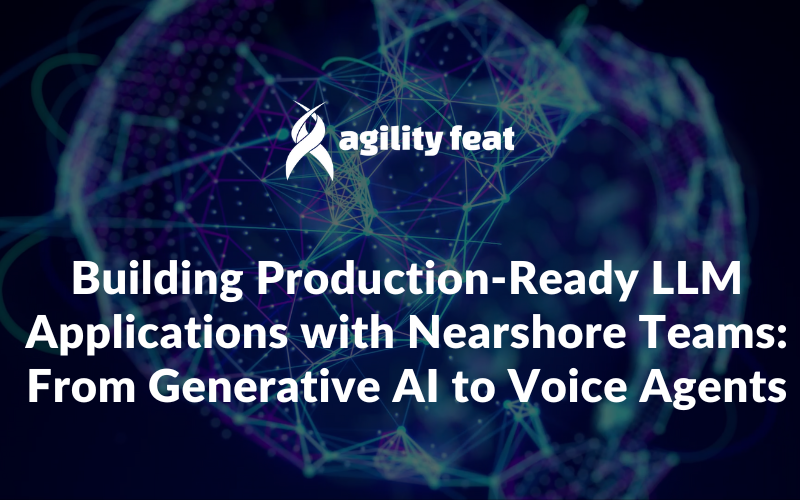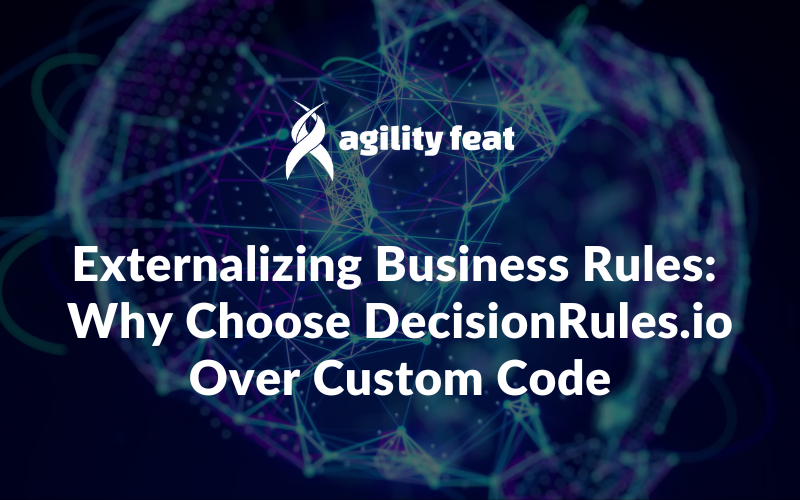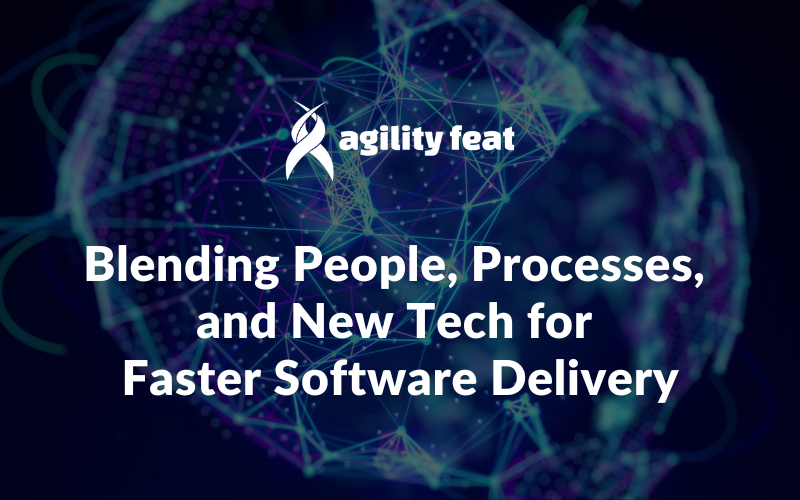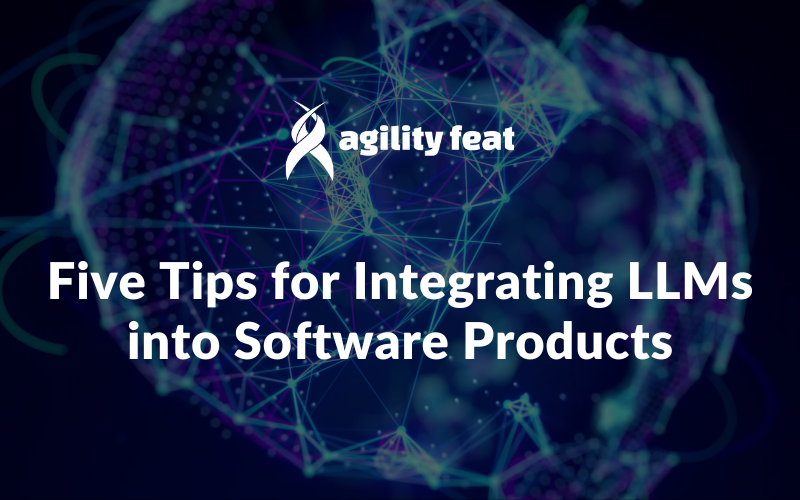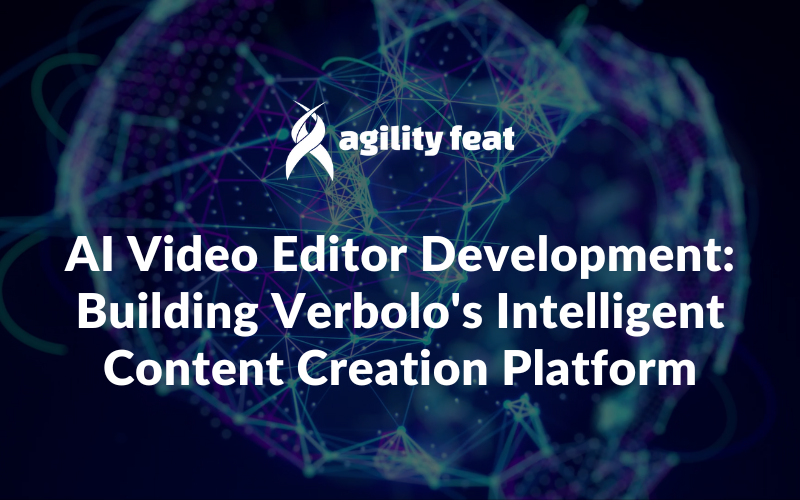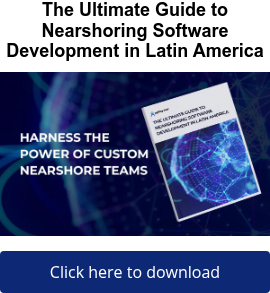At AgilityFeat and our subsidiary, WebRTC.ventures, we’ve been building innovative, production-ready software for over 15 years. Today, we also help clients in education, telehealth, e-commerce, and beyond harness the power of Large Language Models (LLMs).
Our teams build AI voice agents, integrate generative AI into video calls, and design agentic systems that handle real tasks such as offering real-time support in business meetings.
With our specialized nearshore LLM development team, you gain the cost-effectiveness, agility, and domain expertise needed to bring your AI application from idea to launch.
Watch the video below or read on to explore:
- The journey from LLM application prototype to production
- Human-in-the-Loop (HITL) design
- Voice, video, and multimodal interfaces
- Responsible engineering at LLM Speed
- Moving beyond AI hype to build real-world solutions
From Prototype to Production
There’s no shortage of flashy demos out there. But a real-world LLM application needs more than a proof of concept. It needs to work at scale, with reliability, security, and control.
As our AI Tech Lead, Lucas Schnoller, put it:
“It’s easy to make a PoC, but to make this production ready, it’s a huge responsibility and it’s very hard.”
We’ve built the infrastructure to test, monitor, and improve LLM agents in real time. We know how to manage the variability of LLM responses and build safeguards to avoid hallucinations or inappropriate actions.
Human-in-the-Loop Design Is Key
LLMs can now act. They can send emails, schedule meetings, make purchases, even write code. But when you give an AI the power to act, you also need to give humans the power to confirm or intervene. Lucas continues:
“Now there is a Human in the Loop concept that is key, since the agent is doing things for you. You need to provide the user the possibility to review before taking important actions.”
It’s not just about accuracy. It’s about trust. That means designing UIs that clearly show what the agent is doing, offering confirmation steps, and allowing easy corrections.
Voice, Video, and Multimodal Interfaces
Our team has also brought LLMs into more natural forms of communication, including voice agents and AI-powered video experiences. Our deep expertise in WebRTC technologies has been crucial in this sort of work, based on over a decade of experience in real-time communications via our WebRTC.ventures group. Our COO Mariana Lopez highlights the shift:
“Some of the applications that we build are all voice, and so thinking about the UX of talking to an AI, you have to think about those natural pauses in the conversation, adding in filler words while you’re thinking, making it feel a bit more natural.”
The future of Human-Computer Interaction isn’t just text. It’s voice. It’s facial expressions. It’s AI that understands and responds across multiple modes.
Responsible Engineering at LLM Speed
One of the biggest challenges in this space is just keeping up. WebRTC Developer Andres Rincon says,
“The challenge is how to create something that can evolve at the same speed as the LLMs are evolving. Because the speed is crazy. Every day you can find something new!”
That’s why we invest in strong internal processes: continuous testing, real-time observability, and a clear focus on where LLMs actually add value.
Not every application needs an LLM. But when it makes the experience “a million times better,” as Mariana Lopez put it, we’ll help you get it right.
It’s Not Hype or Magic. It’s Engineering
Our team is excited about the applications that we can build using LLMs. But we’re also grounded in reality. Our WebRTC Developer Advocate, Hector Zelaya, shared,
“It’s important to make that distinction, that it’s a tool, it’s not a solution per se. But it’s something that we can use to build upon for solutions that make our lives easier or that solve specific issues.”
That’s our approach: not chasing hype, but solving real problems with a human-centered mindset and the engineering muscle to deliver.
Nearshore Teams That Deliver Real-World AI Solutions
If you are planning or already building an LLM-powered experience, such as GenAI integration, voice, video, chat, or agentic AI, we would love to connect.
Our nearshore development teams can support you at any stage, from rapid prototyping and full-scale development to ongoing improvements like scaling and feature enhancement.
We also offer custom nearshore developer teams to augment your own, and can help you establish your LatAm LLM Development Center of Excellence through our Build-Operate-Transfer (BOT) model.

